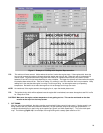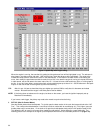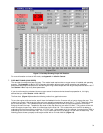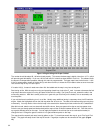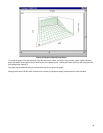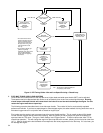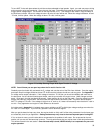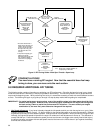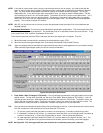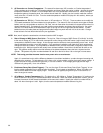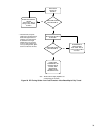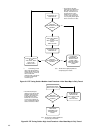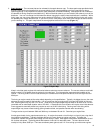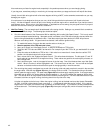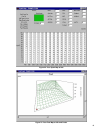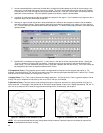
37
NOTE: In the idle air control motor, there is simply a valve that lets extra air into an engine. It is used to raise the idle
when an engine is cold and to maintain a desired rpm when a vehicle with an automatic transmission is placed in
gear. You must set the throttle plates to provide the majority of the airflow at idle to an engine. The IAC just
supplements this. If your idle is higher than you program it to be, you have to close the throttle plates. The IAC
can not take out air once it is in the closed position. The position of the IAC is shown on the data monitor. “10” is
closed and “200” is the maximum opening position. Conversely, if the engine is idling lower than you program,
and the IAC is at “200”, then you need to open up the throttle plates more. The throttle plates must be adjusted
properly. This is critical for proper EFI function.
NOTE: With EFI, you should not and do not want to move the gas pedal to start the engine if all of the parameters are
adjusted properly.
2. Acceleration Enrichment - The next area to be addressed is acceleration compensation. This will be tuned at this time
when the engine is at operating temperature. The accelerator pump on a carburetor performs the same function. To get
to this screen click “Fuel”, and then “Acceleration Enrichment”.
There are two inputs that cause the ECU to add extra fuel when the engine rpm is increased. They are:
1) When the throttle is moved which is sensed by the throttle position sensor (TPS).
2) When the load on the engine changes which is sensed by the Manifold Pressure (MAP) Sensor.
TIP: Again, the starting values on the base fuel maps should be fairly close to most applications, so you shouldn’t need to
make extremely large changes unless you have an unusual combination.
Figure 19 Acceleration Enrichment
A. Pulse Width—Rate of Change of TPS (mSec) – First, we will adjust acceleration enrichment based on the throttle
position sensor. The top of the chart that you see says “Pulse Width –Rate of change of TPS (mSec)”. It has 16
cells that go from left to right. What these cells do is add extra fuel when the TPS moves. The faster it moves, the
more to the right it looks for a value. Conversely, the slower it moves, the more to the left it looks for a value. The
value entered is a fuel pulse width in milliseconds. Numbers can range from 0 to 4 in these cells.
TIP: Don’t get overly worried about knowing exactly what 2 milliseconds of fuel are. Just be aware that the number can be
from 0 to 4 and that 4 is the most fuel you can enter when the TPS moves.
1. To tune this, slowly move the gas pedal in neutral to rev the engine up. It should be crisp and very clean.
2. If it hesitates it is either too rich or lean. It is sometimes hard to tell which, so just change the left 3 numbers up
or down in increments of .1-.25 and see if it gets better or worse. Find the values that work best.
3. On most engines the left three values will be from 1 to 2 and the values on the right will be from 3 to 4. The
numbers on the right are for very quick movement of the throttle, such as launching a car at the dragstrip.
NOTE: See Figure 20. This tuning provides the same function as an accelerator pump on a carburetor.



